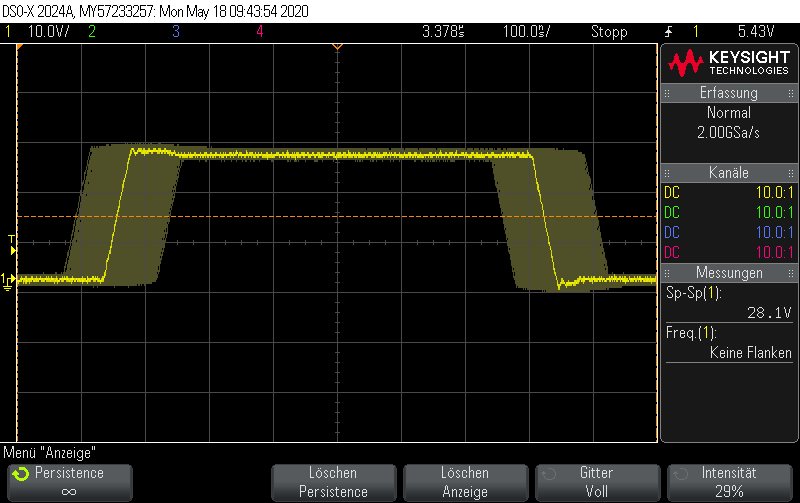Other Parts Discussed in Thread: LM3150, , LM25145, LM73605
We got an LM3150 Eval250 board.
We started our test with Vin 24V and 1-5A load.
We see in the original Eval Board configuration a very large jitter in the rising and falling edges of the switch node. Up to 400ns of jitter.
That surprises me a lot, especially since the design is optimal. So noise on FB could not be.
I put the ripple injection circuit on the board
The jitter has been reduced . However, I can't get him away completely.
I still have 100ns jitter in the SW node.
I've also tried a few values.
If everything else works, is a jitter of 100ns acceptable?
Regards Rainer


